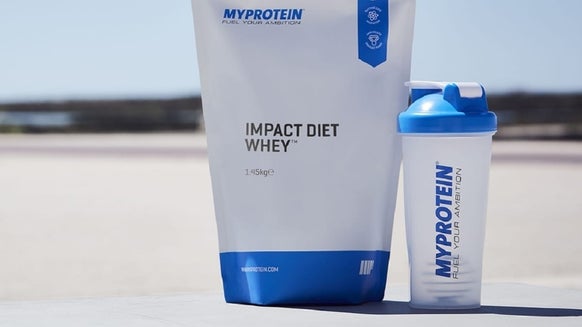Muscle Professor Academy | Alpha Lipoic Acid | Benefits, Dosage & Weight Loss Effect of ALA

Dr Jacob M. Wilson PhD, CSCS*D, is professor and director of the skeletal muscle and sports nutrition laboratory at the Applied Science and Performance Institute, Florida - but you might know him better as The Muscle Professor. Today the Prof talks us through the benefits of Alpha Lipoic Acid, how much we should take for both its antioxidant and fat loss effects, and discusses the other benefits of this versatile supplement.
Athletes are constantly seeking new ways to drive nutrients towards muscle and away from fat. They also look to drastically speed recovery. One supplement which shows promise is Alpha-Lipoic Acid (ALA).
ALA is a coenzyme that is used in many metabolic processes for energy production and it acts as a powerful antioxidant. When the body undergoes metabolism with oxygen, oxidants and free radicals are produced, which can lead to increased inflammation and cellular damage. Being an antioxidant, ALA can help prevent or repair some of this damage.
ALA's Effect on Weight Loss, Fat Gain Prevention and Hunger
While ALA is often touted as primarily a powerful antioxidant, ALA seems to have potentially beneficial effects on fat loss as well as prevention of further fat gain. Multiple studies have shown that ALA stimulates the activation of an enzyme called 5’-adenosine monophosphate kinase (AMPK) in muscle and fat tissue. AMPK is the cells fuel gauge and switches it into a state that optimizes fat oxidation. This occurs by inhibiting another enzyme called Acetyl-CoA carboxylase which puts the breaks on fat oxidation (Li, Dungan, Carrier, Rideout, & Williamson, 2014).
Why is this important? As you can probably tell, this increases the likelihood that you can successfully drop body fat, while in a caloric deficit. These benefits of ALA may have a direct effect on the ability to burn fat.
Interestingly, ALA may affect AMPK not only in muscle and fat, but also in the brain. Research shows that supplementation of ALA can inhibit AMPK activation in the hypothalamus, a region of the brain primarily responsible for energy homeostasis in the body. By inhibiting AMPK in this brain region, ALA tells the body that there is an abundance of energy available. This culminates in a suppression of appetite, which is certainly beneficial while dieting.
So what does this all mean? By decreasing AMPK in the brain while simultaneously increasing its activity in muscle and fat, ALA can potentially promote increased fat burning, prevent fat gain and reduce hunger, creating a perfect environment positively changing body composition.
ALA for Nutrient Partitioning
ALA has been shown to have a nutrient partitioning effect, which means that when consumed with carbohydrates it will partition those carbohydrates to muscle tissue and away from fat tissue (Jacob, et al., 1996). This is beneficial for anyone during a cutting or bulking cycle because if one can distribute nutrients towards muscle and away from fat they will successfully increase or maintain lean muscle and decrease body fat.
This partitioning of nutrients towards muscle and away from fat tissue will further increase muscle energy storage, amino acid storage, and increase insulin sensitivity, which is the body’s ability to use carbohydrates in the presence of insulin.
Dosage of Alpha Lipoic Acid & When To Take
In regards to ALA as an antioxidant doses of 200-300mg per day are shown to be beneficial for reducing oxidative stress (Silvestri, et al., 2015). For the purpose of increasing insulin sensitivity, reducing blood sugar, and decreasing body fat doses of 600mg per day have been shown to be beneficial (Okanovic, Prnjavorac, Jusufovic, & Sejdinovic, 2015).
There are specific times during the day that ALA is best taken. Due to the fact that ALA is an antioxidant it should be consumed as far away from the workout period as possible. This is because the metabolic damage that occurs during training is a key trigger for muscle growth. Without this metabolic stress the effects of resistance training may not be a pronounced.
Therefore, if ALA is consumed too close to the workout window it may negate some of the benefits of training (Li, Dungan, Carrier, Rideout, & Williamson, 2014). Lastly, it would be most beneficial to divide the dosing of ALA throughout the day on two or three occasions to receive maximal benefit.

Jacob, S., Streeper, R. S., Fogt, D. L., Hokama, J. Y., Tritschler, H. J., Dietze, G. J., & Henriksen, E. J. (1996, August). The antioxidant alpha-lipoic acid enhances insulin-stimulated glucose metabolism in insulin-resistant rat skeletal muscle. Diabetes, 45(8), 1024-9.
Li, Z., Dungan, C. M., Carrier, B., Rideout, T. C., & Williamson, D. L. (2014, December). Alpha-lipoic acid supplementation reduces mTORC1 signalling in skeletal muscle from high fat fed, obese Zucker rats. Lipids, 49(12), 1193-201.
Okanovic, A., Prnjavorac, B., Jusufovic, E., & Sejdinovic, R. (2015, July 9). Alpha-lipoic acid reduces body weight and regulates triglycerides in obese patients with diabetes mellitus. Medicinski glasnik, 13(2).
Silvestri, S., Orlando, P., Armeni, T., Padella, L., Bruge, F., Seddaiu, G., Tiano, L. (2015, July). Coenzyme Q10 and α-lipoic acid: antioxidant and pro-oxidant effects in plasma and peripheral blood lymphocytes of supplemented subjects. Journal of Clinical Biochemistry and Nutrition, 57(1), 21-26.










